King’s Cross Gasholders launch with Wilkinson Eyre redesign
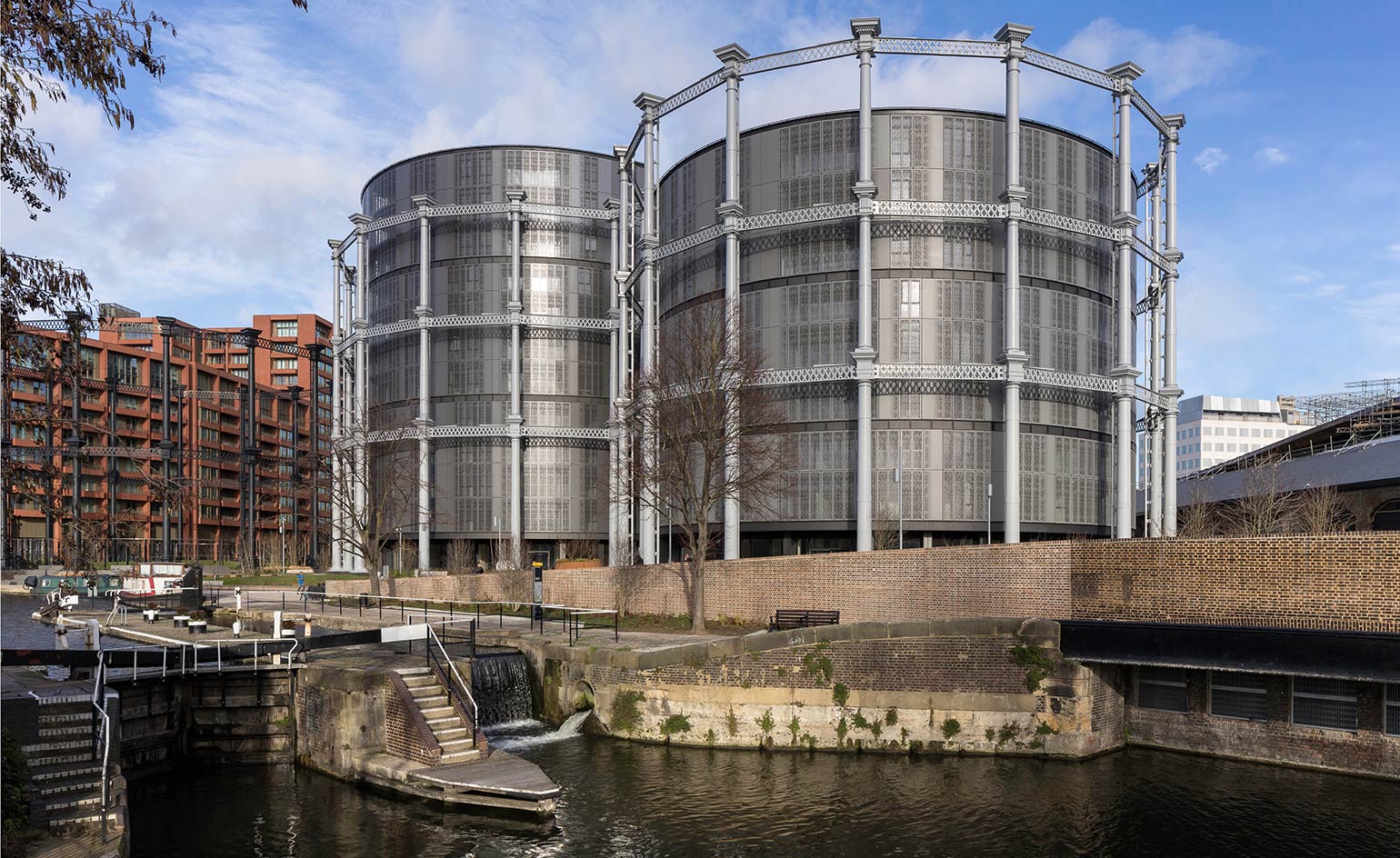
Modern developments abound in the ongoing refresh of London’s bustling King’s Cross area; however few of them have the design flair and historical character of the famous Gasholder triplets.
The existing set of three interlocking gasholders, a distinguishing part of King’s Cross industrial heritage identity, has now been carefully cleaned up and incorporated into a modern design by Wilkinson Eyre, who transformed them into a contemporary, luxury residential complex, full of bespoke details and historical character.
Created for King’s Cross Central Limited Partnership, the Gasholders development has just been officially completed, featuring a wealth of open spaces for the residents, as well as a rich list of amenities, such as a gym, spa, bookable work space and party room. The outdoor areas include a generous terrace with gardens designed by award-winning specialist Dan Pearson, while a lush entrance lobby features a dramatic cascading staircase and an especially commissioned lighting artwork by German artist Tobias Rehberger.
The project, built on concrete cylinders of eight, nine and 12 storeys, consist of 145 units that range from studios to three bedroom apartments, duplexes and penthouses. Meanwhile, Wilkinson Eyre’s sensitive, yet thoroughly modern glass and aluminium design is respectful of the existing features and lies encased within the Grade II-listed Victorian iron pillars and struts.
The interior architecture is masterfully crafted by Jonathan Tuckey Design (with interiors by No 12 Studio). The composition aims at bringing together industrial, craft and luxury elements in a homely and contemporary interior that befits central London’s dynamism. Natural materials such as lye-treated oak, and tailor made details, such as the bathrooms’ cast concrete basins add refinement to the whole.
A selection of retail spaces will be housed on the Gasholders ground level, allowing a hint of public access to the complex that aims to make the most of a careful balance of juxtapositions between industrial and luxurious, old and new, public and private, inside and outside.
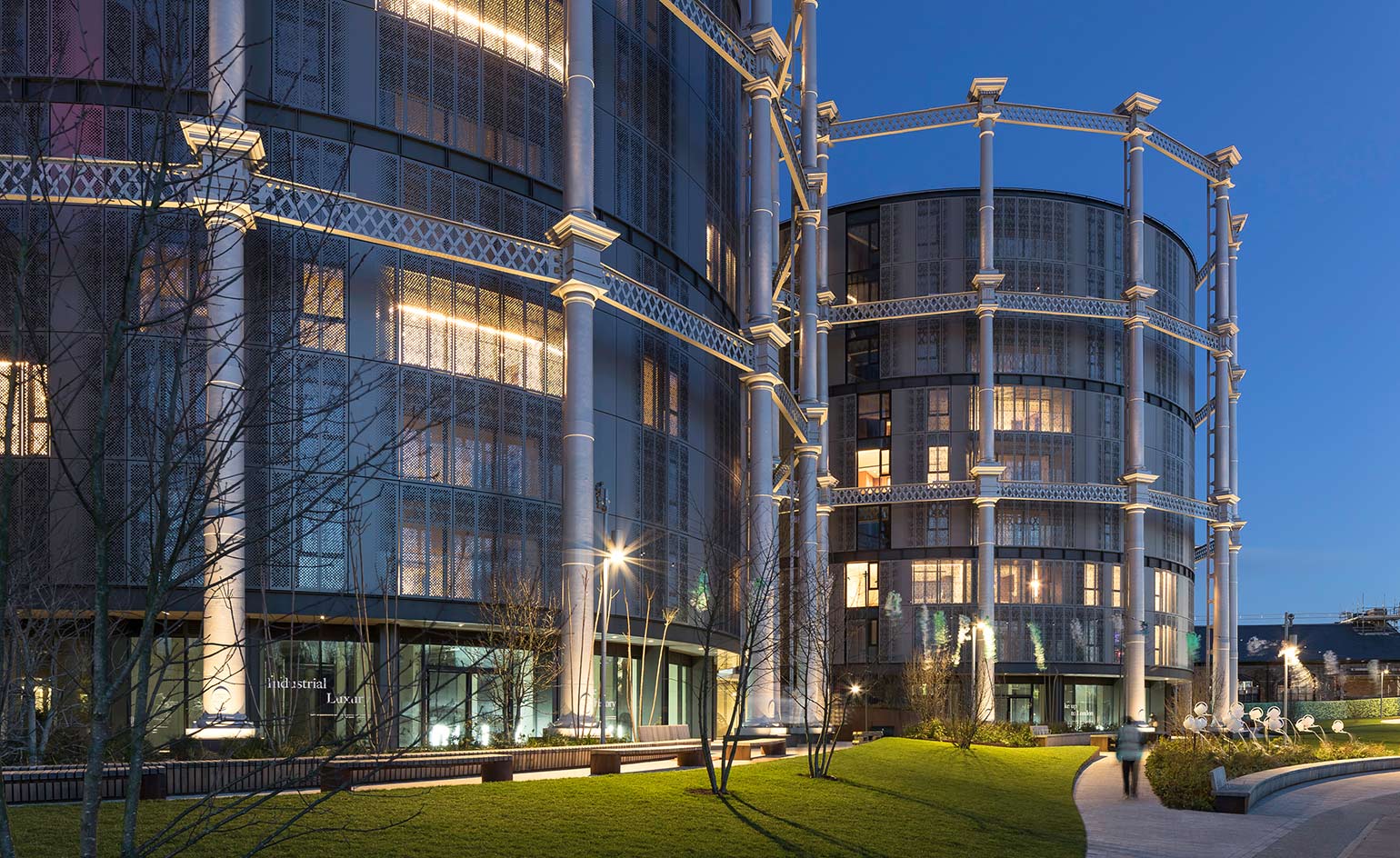
The project, designed by architects Wilkinson Eyre with interior architecture by Jonathan Tuckey, involved the transformation of the industrial gasholders into a modern residential complex.

The complex is entered through a luxurious lobby that features an especially commissioned lighting artwork by German artist, Tobias Rehberger.
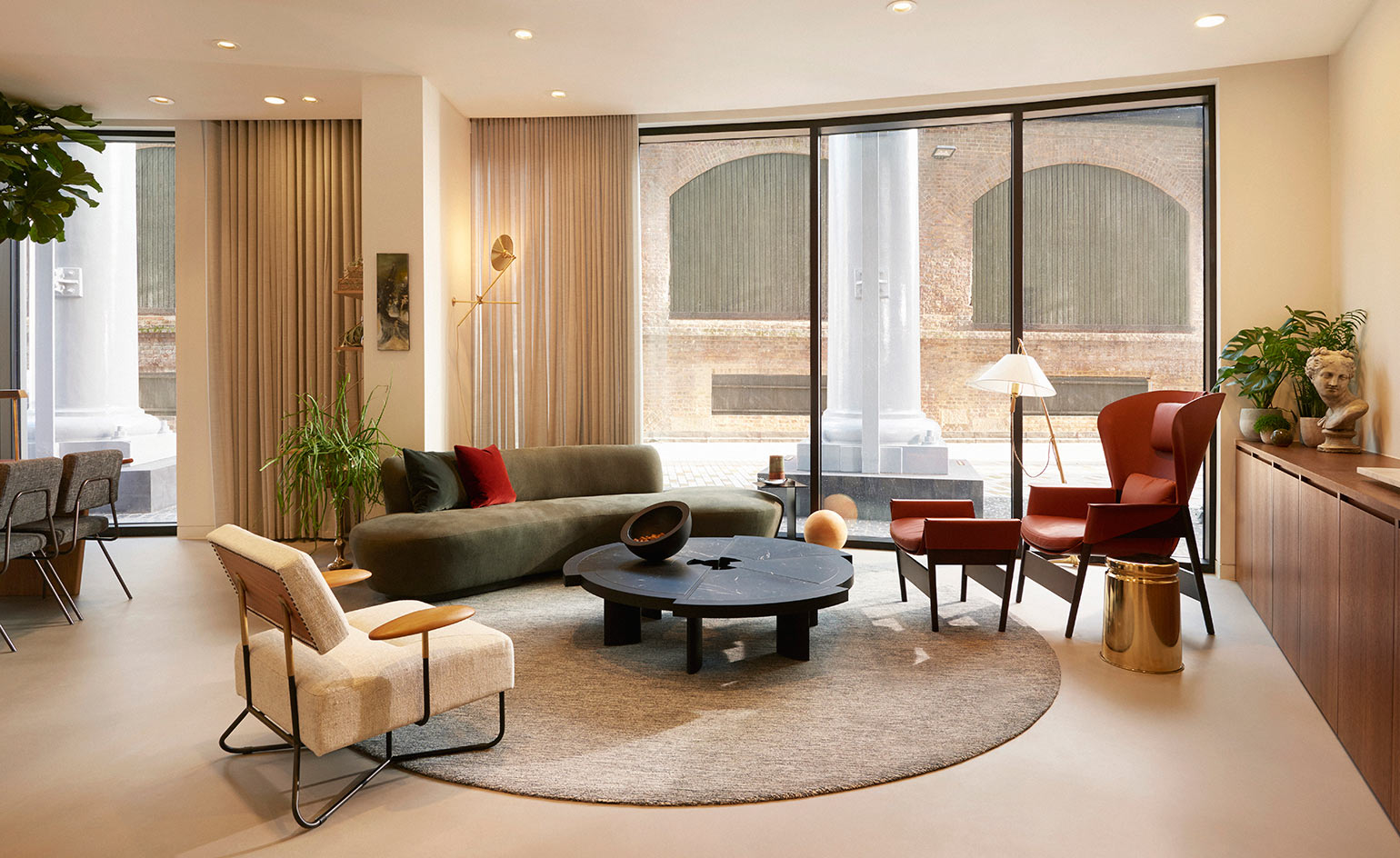
The Gasholders feature a wealth of open spaces for the residents, as well as a rich list of amenities, such as a gym, spa, bookable work space and party room.
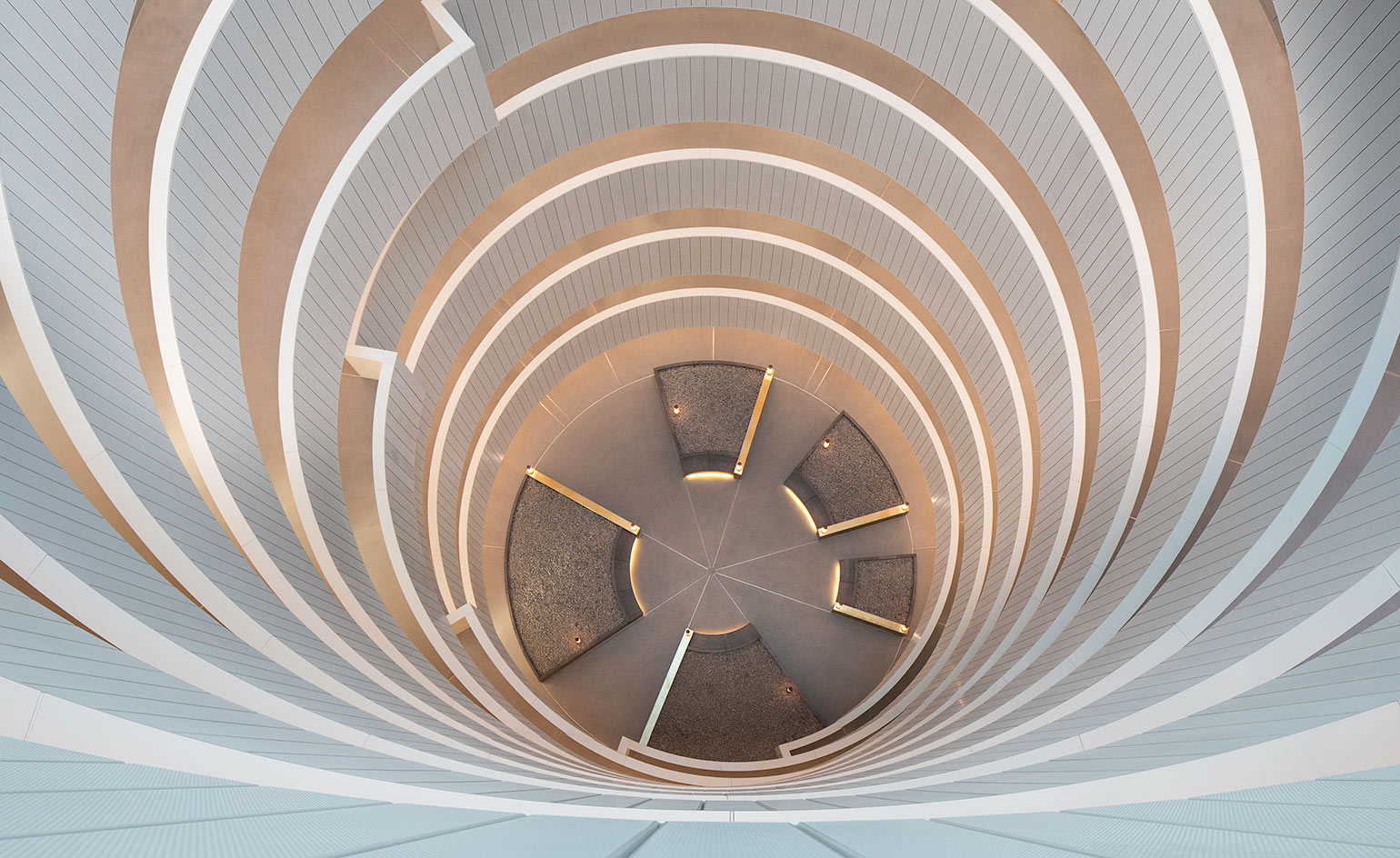
The project, built on concrete cylinders of eight, nine and twelve storeys, consist of 145 units.

Residential offerings range from studios to three bedroom apartments, duplexes and penthouses with interiors by No 12 Studio.
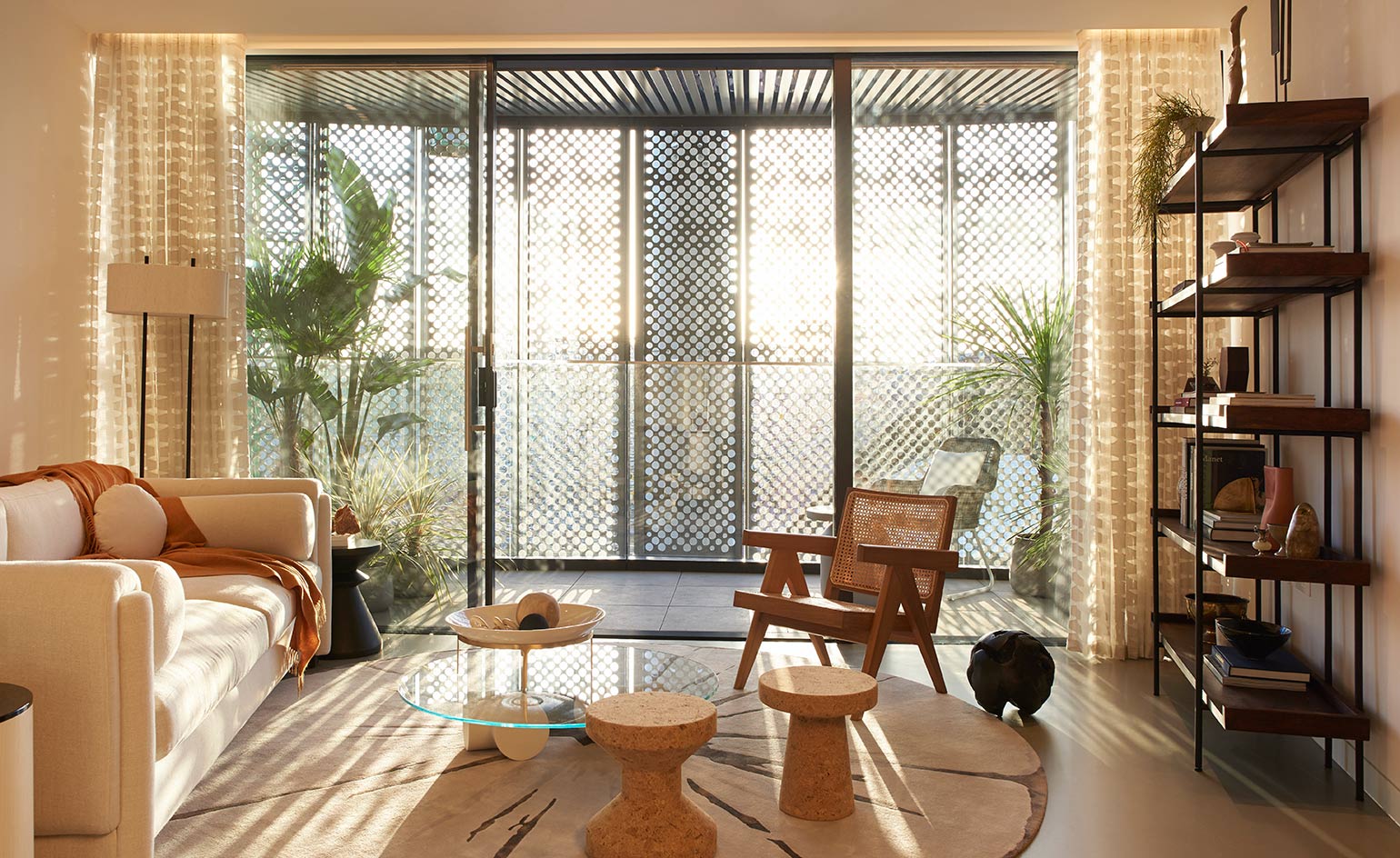
Natural materials such as lye-treated oak, and tailor made details, such as the bathrooms’ cast concrete basins add refinement to the interiors.
INFORMATION
For more information visit the Wilkinson Eyre website and the Jonathan Tuckey website
Receive our daily digest of inspiration, escapism and design stories from around the world direct to your inbox.
Ellie Stathaki is the Architecture & Environment Director at Wallpaper*. She trained as an architect at the Aristotle University of Thessaloniki in Greece and studied architectural history at the Bartlett in London. Now an established journalist, she has been a member of the Wallpaper* team since 2006, visiting buildings across the globe and interviewing leading architects such as Tadao Ando and Rem Koolhaas. Ellie has also taken part in judging panels, moderated events, curated shows and contributed in books, such as The Contemporary House (Thames & Hudson, 2018), Glenn Sestig Architecture Diary (2020) and House London (2022).
-
 Volvo’s quest for safety has resulted in this new, ultra-legible in-car typeface, Volvo Centum
Volvo’s quest for safety has resulted in this new, ultra-legible in-car typeface, Volvo CentumDalton Maag designs a new sans serif typeface for the Swedish carmaker, Volvo Centum, building on the brand’s strong safety ethos
-
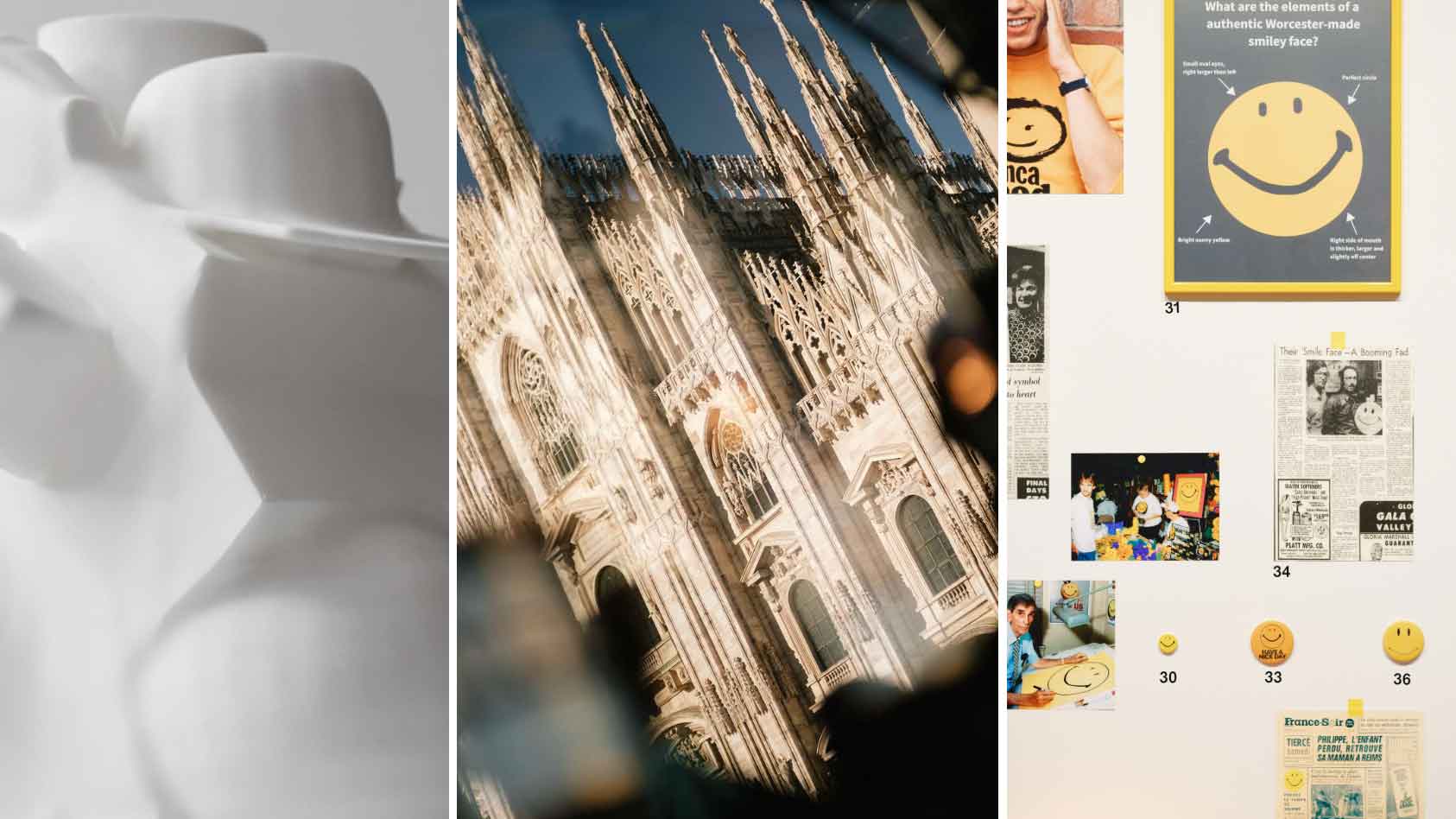 We asked six creative leaders to tell us their design predictions for the year ahead
We asked six creative leaders to tell us their design predictions for the year aheadWhat will be the trends shaping the design world in 2026? Six creative leaders share their creative predictions for next year, alongside some wise advice: be present, connect, embrace AI
-
 10 watch and jewellery moments that dazzled us in 2025
10 watch and jewellery moments that dazzled us in 2025From unexpected watch collaborations to eclectic materials and offbeat designs, here are the watch and jewellery moments we enjoyed this year
-
 Arbour House is a north London home that lies low but punches high
Arbour House is a north London home that lies low but punches highArbour House by Andrei Saltykov is a low-lying Crouch End home with a striking roof structure that sets it apart
-
 A former agricultural building is transformed into a minimal rural home by Bindloss Dawes
A former agricultural building is transformed into a minimal rural home by Bindloss DawesZero-carbon design meets adaptive re-use in the Tractor Shed, a stripped-back house in a country village by Somerset architects Bindloss Dawes
-
 RIBA House of the Year 2025 is a ‘rare mixture of sensitivity and boldness’
RIBA House of the Year 2025 is a ‘rare mixture of sensitivity and boldness’Topping the list of seven shortlisted homes, Izat Arundell’s Hebridean self-build – named Caochan na Creige – is announced as the RIBA House of the Year 2025
-
 In addition to brutalist buildings, Alison Smithson designed some of the most creative Christmas cards we've seen
In addition to brutalist buildings, Alison Smithson designed some of the most creative Christmas cards we've seenThe architect’s collection of season’s greetings is on show at the Roca London Gallery, just in time for the holidays
-
 In South Wales, a remote coastal farmhouse flaunts its modern revamp, primed for hosting
In South Wales, a remote coastal farmhouse flaunts its modern revamp, primed for hostingA farmhouse perched on the Gower Peninsula, Delfyd Farm reveals its ground-floor refresh by architecture studio Rural Office, which created a cosy home with breathtaking views
-
 A revived public space in Aberdeen is named Scotland’s building of the year
A revived public space in Aberdeen is named Scotland’s building of the yearAberdeen's Union Terrace Gardens by Stallan-Brand Architecture + Design and LDA Design wins the 2025 Andrew Doolan Best Building in Scotland Award
-
 A refreshed 1950s apartment in East London allows for moments of discovery
A refreshed 1950s apartment in East London allows for moments of discoveryWith this 1950s apartment redesign, London-based architects Studio Naama wanted to create a residence which reflects the fun and individual nature of the clients
-
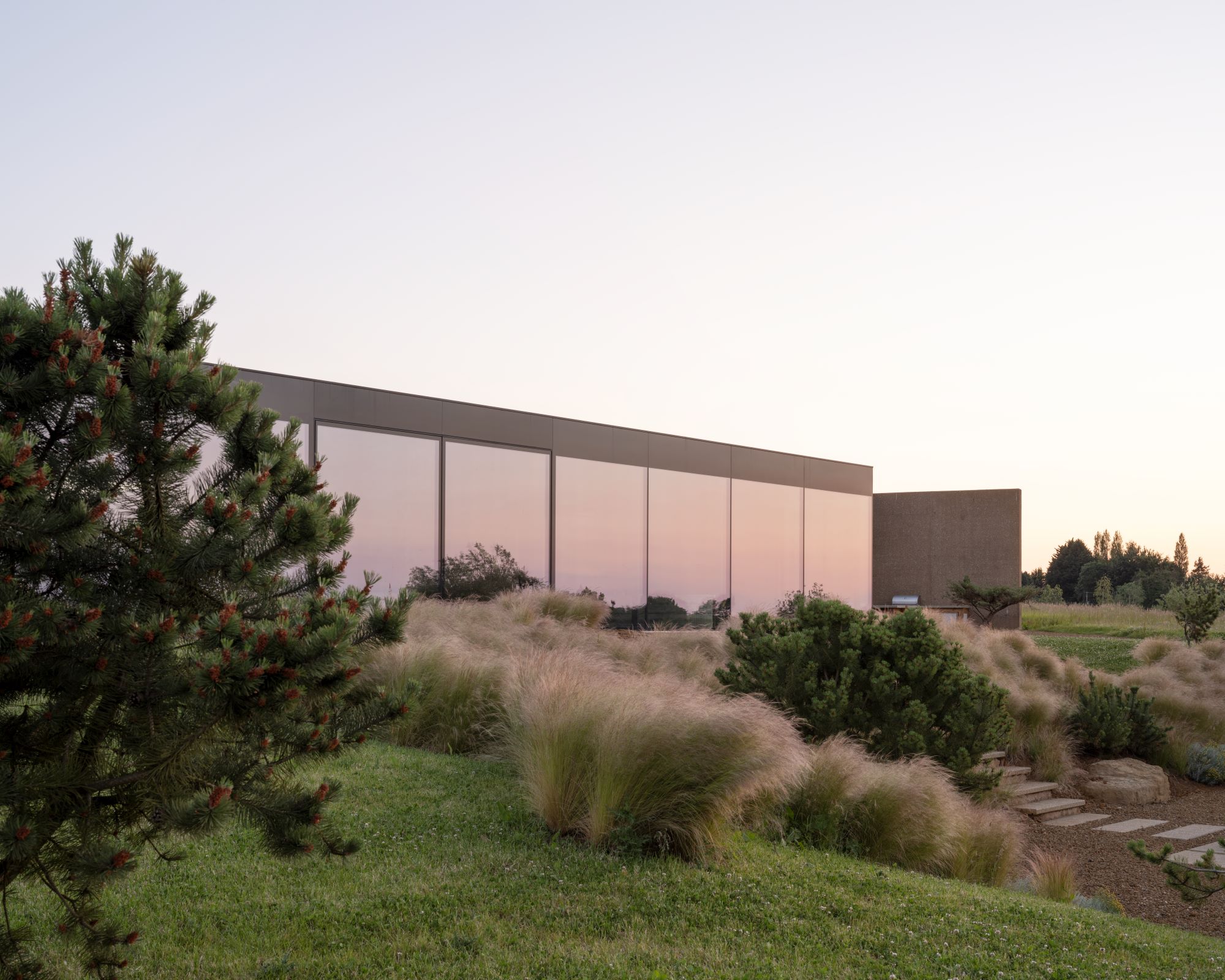 In this Cotswolds home, drama meets minimalism
In this Cotswolds home, drama meets minimalismCotswolds home Hiaven house, with interiors designed by McLaren Excell, is a perfect blend of contemporary chic and calm, countryside drama